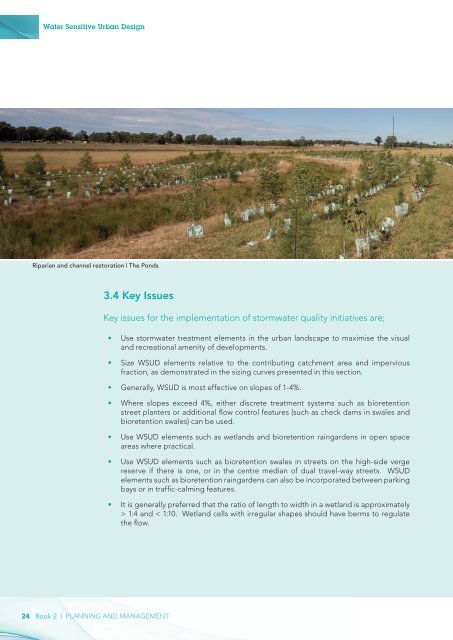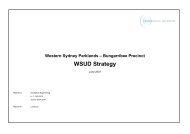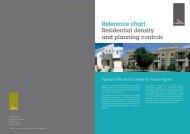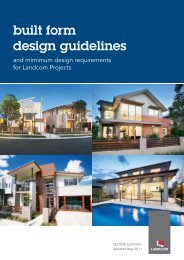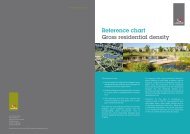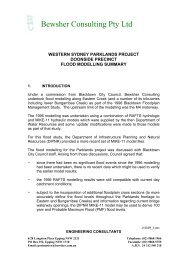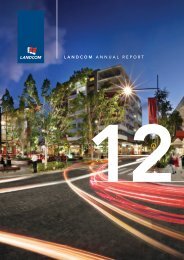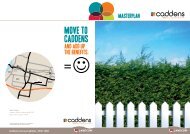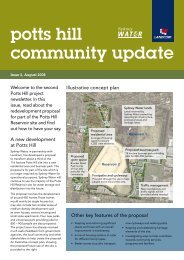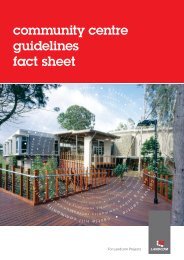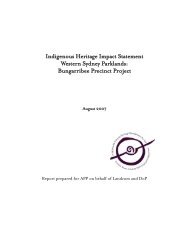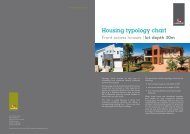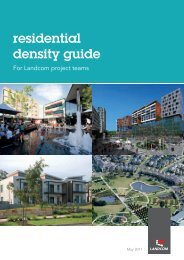Water Sensitive Urban Design
Book 2 | Planning and Management - WSUD
Book 2 | Planning and Management - WSUD
- No tags were found...
You also want an ePaper? Increase the reach of your titles
YUMPU automatically turns print PDFs into web optimized ePapers that Google loves.
<strong>Water</strong> <strong>Sensitive</strong> <strong>Urban</strong> <strong>Design</strong><br />
Riparian and channel restoration | The Ponds<br />
3.4 Key Issues<br />
Key issues for the implementation of stormwater quality initiatives are;<br />
••<br />
Use stormwater treatment elements in the urban landscape to maximise the visual<br />
and recreational amenity of developments.<br />
••<br />
Size WSUD elements relative to the contributing catchment area and impervious<br />
fraction, as demonstrated in the sizing curves presented in this section.<br />
••<br />
Generally, WSUD is most effective on slopes of 1-4%.<br />
••<br />
Where slopes exceed 4%, either discrete treatment systems such as bioretention<br />
street planters or additional flow control features (such as check dams in swales and<br />
bioretention swales) can be used.<br />
••<br />
Use WSUD elements such as wetlands and bioretention raingardens in open space<br />
areas where practical.<br />
••<br />
Use WSUD elements such as bioretention swales in streets on the high-side verge<br />
reserve if there is one, or in the centre median of dual travel-way streets. WSUD<br />
elements such as bioretention raingardens can also be incorporated between parking<br />
bays or in traffic-calming features.<br />
••<br />
It is generally preferred that the ratio of length to width in a wetland is approximately<br />
> 1:4 and < 1:10. Wetland cells with irregular shapes should have berms to regulate<br />
the flow.<br />
24 Book 2 | planning and management


